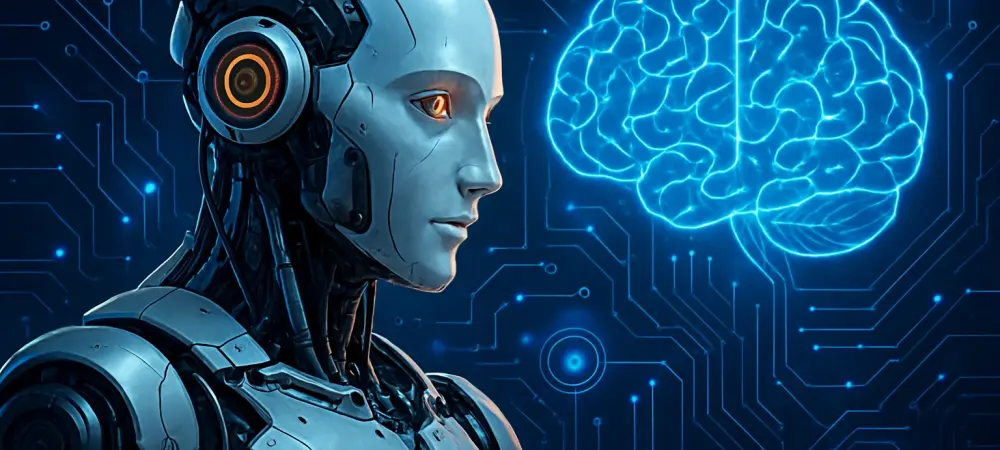Imagine a world where robots don’t just follow commands but think, plan, and adapt to complex situations as effortlessly as humans. This isn’t a distant dream but a reality unfolding right now with the advent of advanced robotics reasoning technology, which is redefining automation, pushing boundaries in industries, and promising to reshape daily life in profound ways. As technology accelerates, understanding this shift becomes essential to grasp its impact on the future. This analysis dives into the emergence of cutting-edge systems like DeepMind’s Gemini Robotics 1.5, explores real-world applications, gathers expert insights, and evaluates the long-term implications of robots that reason before they act.
The Rise of Reasoning in Robotics
Growth and Innovation in Robotic Intelligence
The robotics field is witnessing an unprecedented surge in technologies focused on reasoning and autonomy, marking a pivotal shift in machine capabilities. A landmark in this journey is the release of DeepMind’s Gemini Robotics 1.5, which has set a new standard for integrating vision, language, and action in robotic systems. Since its introduction, this model has underscored a growing momentum, with industry reports indicating a sharp rise in investments in such vision-language-action frameworks over recent years. This financial backing reflects a broader confidence in the potential of reasoning-based robotics to solve complex challenges.
Beyond mere funding, the adoption of these technologies is expanding rapidly across sectors. Companies and research institutions are prioritizing the development of robots that can interpret and respond to dynamic environments. The emphasis on models like Gemini Robotics 1.5 highlights a trend toward creating systems that don’t just react but anticipate and strategize, paving the way for smarter automation solutions. This growth trajectory suggests that robotic intelligence is no longer a niche pursuit but a core focus of technological advancement.
Real-World Breakthroughs and Applications
The practical implications of these advancements are already visible in striking ways. Gemini Robotics 1.5 enables robots to tackle context-dependent tasks with remarkable precision, such as sorting laundry by color or packing a suitcase based on weather forecasts. These examples demonstrate how robots can now process environmental cues and user instructions to execute nuanced activities, a leap beyond traditional programmed responses.
Further showcasing this technology’s potential, skill transfer across diverse robotic platforms has become a reality. Testing on systems like the dual-arm ALOHA2 robot, the Franka bi-arm, and Apptronik’s Apollo humanoid robot reveals seamless interoperability. A task learned on one platform can be applied to another without extensive retraining, highlighting the versatility and efficiency of these models in varied settings.
These breakthroughs are not isolated experiments but signal a broader applicability in real-world scenarios. From household chores to industrial operations, the ability of robots to adapt and generalize skills across hardware is transforming expectations. This adaptability ensures that advancements in robotic reasoning can be scaled and implemented across multiple domains, enhancing their practical value.
Expert Perspectives on Robotic Reasoning
The integration of reasoning and embodied decision-making in robotics has garnered significant attention from industry leaders and researchers. DeepMind scientists emphasize that systems like Gemini Robotics 1.5 represent a foundational step toward overcoming the limitations of purely reactive machines. Their insights point to a future where robots can analyze situations and explain their actions, fostering trust and collaboration with human users.
Challenges remain, particularly in achieving artificial general intelligence (AGI) within physical environments. Experts highlight that while models like Gemini Robotics-ER 1.5, with its ability to strategize using digital tools, show promise, scaling such intelligence to unpredictable real-world conditions is complex. Discussions often center on the need for robust frameworks to ensure safety and reliability as these technologies evolve.
Competition in this space is fierce, with projects like Tesla’s Optimus vying for dominance alongside innovations from Apptronik and others. Industry observers note that this race is driving rapid progress, pushing boundaries in humanoid robotics and autonomous systems. The consensus is clear: the stakes are high, and the focus on smarter, more independent robots is intensifying as companies strive to lead in this transformative field.
Future Horizons for Robotics Reasoning Technology
Looking ahead, the evolution of robotics reasoning technology holds the potential to redefine entire industries through full autonomy and AGI-like capabilities. Systems akin to Gemini Robotics 1.5 could revolutionize manufacturing by optimizing workflows, enhance healthcare with precise assistive robots, and streamline logistics with adaptive delivery systems. The promise of such tools lies in their ability to boost efficiency and tackle tasks previously deemed too intricate for machines.
However, this progress comes with significant challenges that must be addressed. Ethical concerns around autonomous decision-making, coupled with the risk of job displacement, loom large. DeepMind’s cautious approach to rolling out Gemini Robotics 1.5 to select partners reflects an awareness of the need for controlled deployment to mitigate unintended consequences while refining these powerful systems.
On a societal level, the integration of reasoning robots into everyday life over the coming decade raises questions about balance. While job creation in tech and maintenance sectors is likely, the displacement of traditional roles could spark tension. The broader implication is a need for policies and education systems to adapt, ensuring that society reaps the benefits of this technology while managing its disruptions thoughtfully.
Conclusion: Embracing the Robotics Reasoning Revolution
Reflecting on this journey, the transformative impact of innovations like Gemini Robotics 1.5 becomes evident as they redefine the landscape of intelligent automation. The trend toward machines that think before acting marks a turning point, balancing remarkable potential with the necessity for caution. As this technology advances, it lays the groundwork for a future where robotics plays a central role in industry and daily life. Moving forward, stakeholders need to prioritize ethical guidelines and robust safety measures to harness these advancements responsibly. Collaboration between developers, policymakers, and communities emerges as a critical step to ensure that the benefits of robotic reasoning are maximized while addressing societal challenges head-on.

